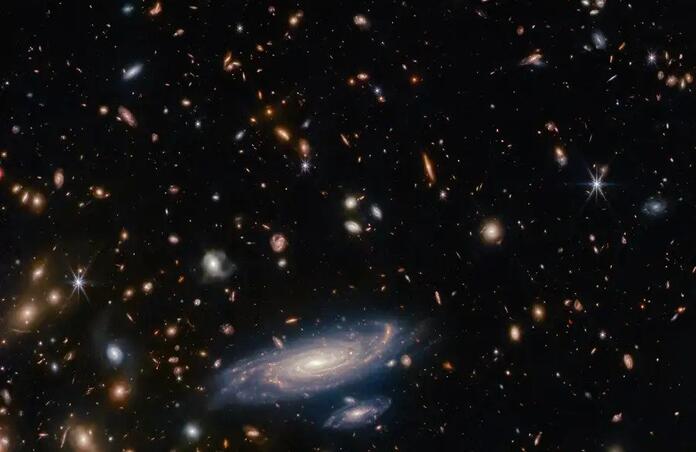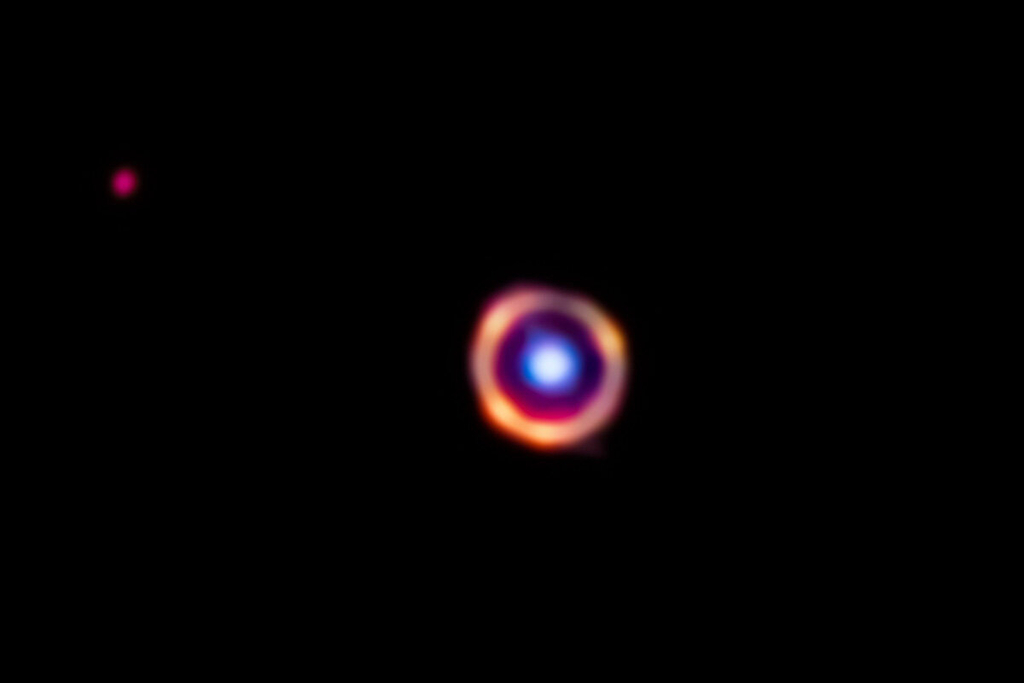Webb detects organic molecules on the most distant galaxy yet

Complex organic molecules are the building blocks of life as we know it, making such substances vital for signs of potential life. With the help of JWST, a team of researchers have detected these molecules in a galaxy located 12 billion light years from Earth, making it the most distant galaxy found to harbour the chemical components.
The team, consisting of scientists from the University of Illinois and Texas A&M university along with an international group of scientists collaborated to study the various infrared signals coming from the galaxy. Some of these signals were generated by larger dust grains within the galaxy, but some are from hydrocarbon molecules. Dust can introduce a problem when searching for signals, since grains absorb and re-emit a large proportion of stellar radiation in the infrared. This results in the important signals from distant objects being nearly undetectable using ground-based telescopes.

James Webb also received help from gravitational lensing. This is an astrophysical phenomenon where a foreground galaxy or object can act as a lens to a background object (source), resulting in the distortion and magnification of the background object. In the special case where both the source and lens are nearly perfectly aligned with the observer, the source appears as a ring, also known as an Einstein ring.

The galaxy of focus was SPT0418-47, first discovered in 2013 by the national science foundation south pole telescope. Previously, it was identified as a dust obscured galaxy. SPT0418-47 was magnified by the help of gravitational lensing by a factor of 30-35, and is located 12 billion light years away. This is the same as looking at a younger universe which is roughly 1.5 billion years old.
“Before having access to the combined power of gravitational lensing and the JWST, we could neither see nor spatially resolve the actual background galaxy through all of the dust," explained University of Illinois Urbana-Champaign astronomy and physics professor Joaquin Vieira.
Spectroscopic data from JWST revealed interstellar gas within the galaxy to be enriched with heavy elements. This suggests that previous generations of stars have lived and died, providing the metals via their explosive deaths as supernovae. A group of compounds detected which are particularly important were polycyclic aromatic hydrocarbons, or PAHs. These are large organic molecules comprising chains of carbon which trace millimetre sized dust grains and help to regulate cooling of the interstellar dust within galaxies. These hydrocarbons are vital at providing insight into the various chemical reactions which occurred during the early universe, and are the basic building blocks of the earliest forms of life on Earth.
In the past, astronomers believed that PAHs were an indication of star formation since the molecules were observed nearby young stars. However, data from JWST implies differently. “Thanks to the high-definition images from Webb, we found a lot of regions with smoke but no star formation, and others with new stars forming but no smoke,” said lead study author Justin Spilker.
"What this research is telling us right now—and we are still learning—is that we can see all of the regions where these smaller dust grains are located—regions that we could never see before the JWST," graduate student Kedar Phadke said. "The new spectroscopic data lets us observe the galaxy's atomic and molecular composition, providing very important insights into the formation of galaxies, their lifecycle and how they evolve."
"It's extremely cool that galaxies I discovered while writing my thesis would one day be observed by the JWST," Vieira said. "I am grateful to the U.S. taxpayers, the NSF and NASA for funding and supporting both the SPT and the JWST. Without these instruments, this discovery could have never been made."
--
Cover image: ESA/Webb, NASA & CSA, A. Martel
Journal source: Justin Spilker, Spatial variations in aromatic hydrocarbon emission in a dust-rich galaxy, Nature (2023). DOI: 10.1038/s41586-023-05998-6. www.nature.com/articles/s41586-023-05998-6
